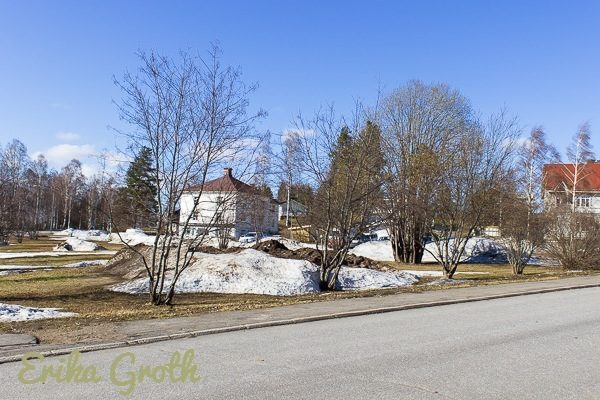
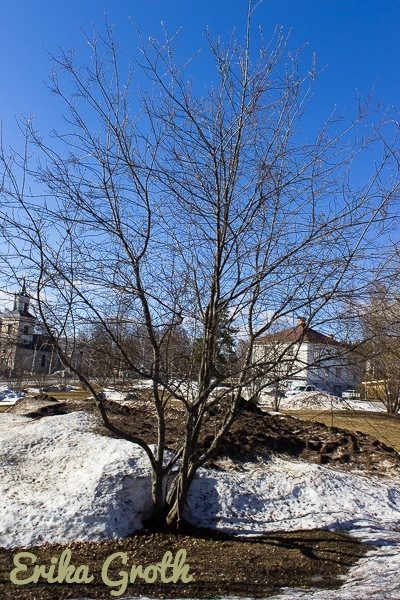
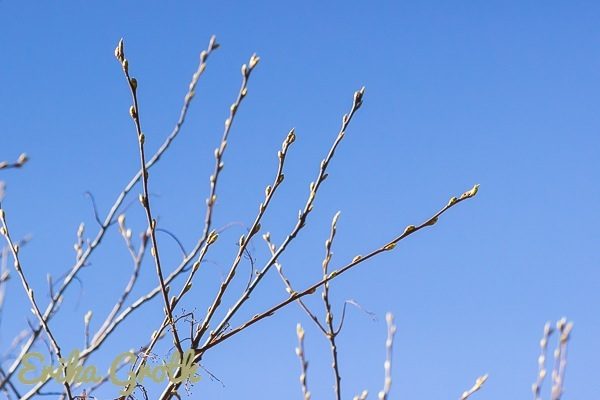 Efter ett kortare bakslag kommer nu våren med full fart. Själv finner jag inte riktigt samma glädje i det som jag brukar göra eftersom jag tyvärr har blivit sjuk, en segdragen sjukdom. Hur som helst, häggen har i alla fall äntligen tinat fram ur den djupa snö den länge stått i, men knopparna har (med något enstaka undantag) ännu inte börjat brista.
Efter ett kortare bakslag kommer nu våren med full fart. Själv finner jag inte riktigt samma glädje i det som jag brukar göra eftersom jag tyvärr har blivit sjuk, en segdragen sjukdom. Hur som helst, häggen har i alla fall äntligen tinat fram ur den djupa snö den länge stått i, men knopparna har (med något enstaka undantag) ännu inte börjat brista.
After a short setback spring is now in full swing. Unfortunately this doesn’t bring me the joy it usually does since I’ve become ill, a lingering illness. Anyway, at least the deep snow that has long covered much of the bird cherry has finally thawed, but the buds have (with a few exceptions) not yet bursted open.
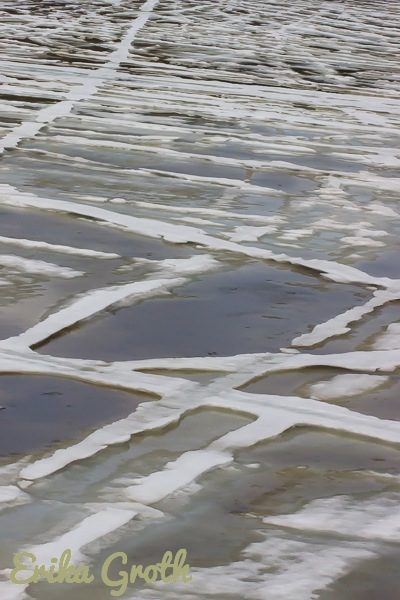
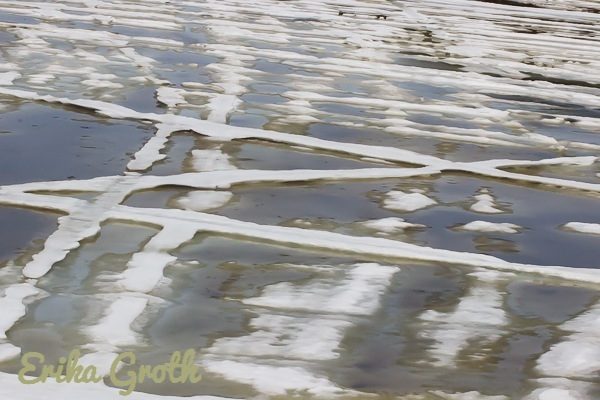
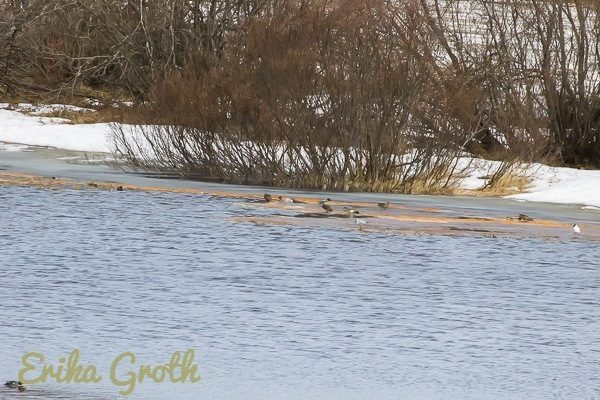
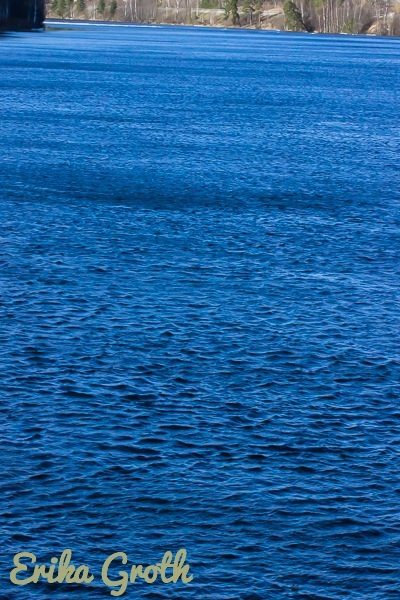
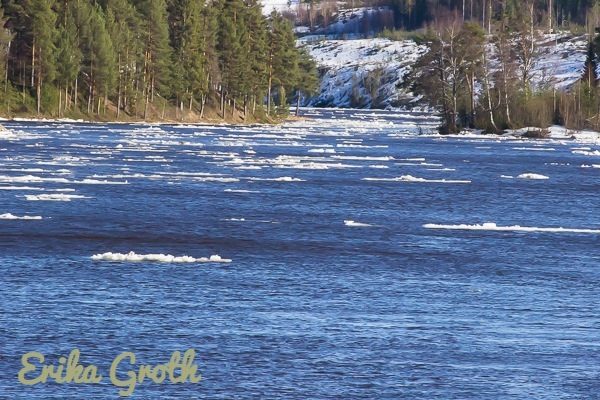
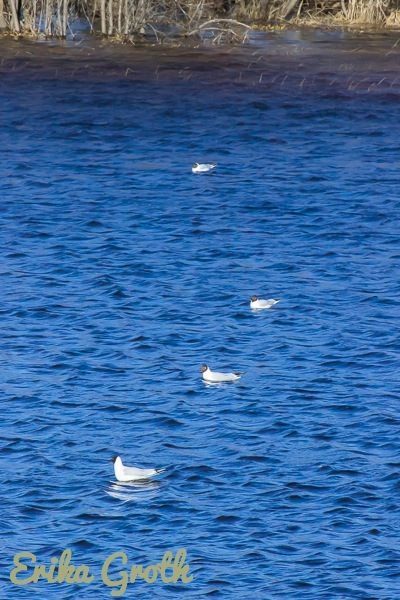 Efter att envist ha klamrat sig fast gick isen till slut i förrgår på Piteälven i Älvsbyn. Ovan är tre bilder av Piteälven här på ”byn” tagna för tre dagar sedan och sedan tre bilder tagna i förrgår. I älven simmar nu gräsänder, bläsänder, krickor och knipor och luften ljuder att skrattmåsarnas skrik och skratt och det ödsliga ropen från en och annan storspov. Talgoxarna, blåmesarna, pilfinkarna och sidensvansarna som har dominerat vinterns fågelliv finns fortfarande kvar men nu är det istället björktrastar, rödvingetrastar och sädesärlor som dominerar i Älvsbyn. Alla möjliga flyttfåglar har börjat dyka upp. Så här långt norrut finns det visserligen inga fält med vårblommor som blåsippor och vitsippor som karaktäriserar våren längre söderut men nära älven hittade jag i alla fall några tussilagor. Och på sistone har även fjärilar börjat dyka upp.
Efter att envist ha klamrat sig fast gick isen till slut i förrgår på Piteälven i Älvsbyn. Ovan är tre bilder av Piteälven här på ”byn” tagna för tre dagar sedan och sedan tre bilder tagna i förrgår. I älven simmar nu gräsänder, bläsänder, krickor och knipor och luften ljuder att skrattmåsarnas skrik och skratt och det ödsliga ropen från en och annan storspov. Talgoxarna, blåmesarna, pilfinkarna och sidensvansarna som har dominerat vinterns fågelliv finns fortfarande kvar men nu är det istället björktrastar, rödvingetrastar och sädesärlor som dominerar i Älvsbyn. Alla möjliga flyttfåglar har börjat dyka upp. Så här långt norrut finns det visserligen inga fält med vårblommor som blåsippor och vitsippor som karaktäriserar våren längre söderut men nära älven hittade jag i alla fall några tussilagor. Och på sistone har även fjärilar börjat dyka upp.
After stubbornly clinging on the ice on Pite River in Älvsbyn finally broke the day before yesterday. Above are three photos of Pite River in our small town taken three days ago and three photos taken two days ago. Mallards (Anas platyrhynchos), Eurasian wigeons (Anas penelope), Eurasian teals (Anas crecca) and common goldeneyes (Bucephala clangula) now swim in the river and the air is full of the cries and laughter of black-headed gulls (Larus ridibundus, the Swedish name skrattmås means laughing gull) and the desolate calls of an occasional Eurasian curlew (Numenius arquata). The great tits (Parus major), Eurasian blue tits (Parus caeruleus/Cyanistes caeruleus), Eurasian tree sparrows (Passer montanus) and Bohemian waxwings (Bombycilla garrulus) that have dominated the bird life during winter are still here but now fieldfares (Turdus pilaris), redwings (Turdus iliacus) and white wagtails (Motacilla alba) dominate in Älvsbyn. All kinds of migratory birds have started to return. This far north there are no fields of spring flowers like liverleaf (Hepatica nobilis) and wood anemone (Anemone nemorosa) that characterize spring further south but close to the river I at least found some colt’s foot (Tussilago farfara). And lately butterflies have also started to appear.
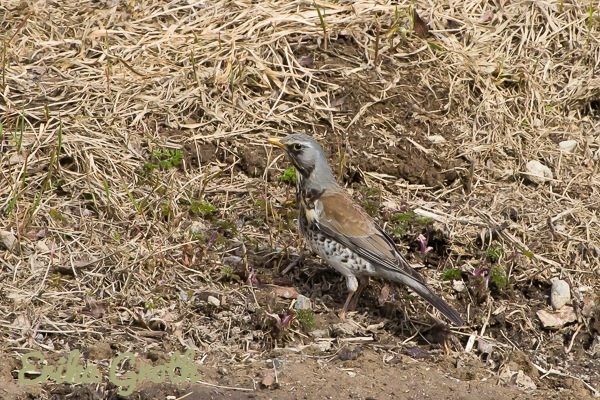
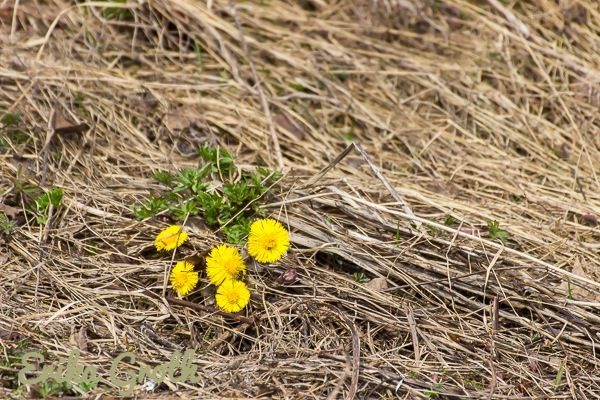
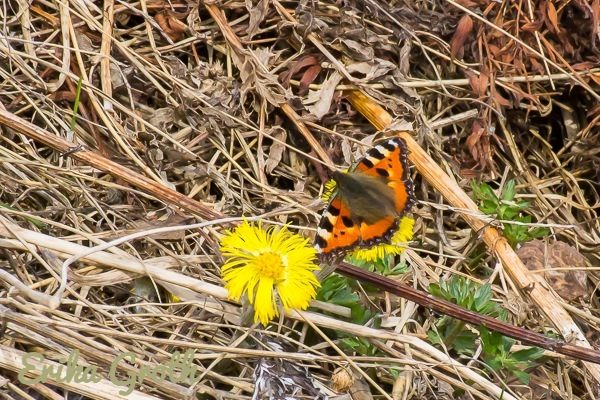
Fotona på häggen är tagna i Älvsbyn 2018-05-07. Övriga bilder är tagna 2018-05-06–07.
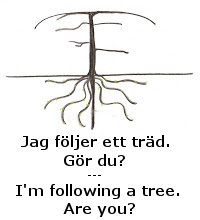 Kolla även in andra trädföljare på The Squirrelbasket (internationellt).
Kolla även in andra trädföljare på The Squirrelbasket (internationellt).

Update a week later (much has happened in just a week!): https://www.erikagroth.se/?p=4907
Fascinating insights into your northern world!
We have many of those birds in common but I am surprised you have seen a hardy small tortoiseshell butterfly so early. Here in the warmer south I have seen nothing but white butterflies so far this spring.
Hope you are feeling better now
Thank you!
It looks like big changes have come quickly. I’m impressed that the snow has melted to that degree around your cherry tree–there was so much. Are those old ski tracks on the river (pre-melt)?
I hope you feel better soon!
Thank you!
The tracks are from snowmobiles. Lots of people around here love to drive snowmobiles for fun (personally I’ve never understood what’s so fun about it). Snowmobile drivers love to drive on frozen rivers since there are no trees, houses and such stuff in the way on the river so they can drive very fast.
Maybe I should have recognized them. We also have snowmobilers, so many that they have taken over the mountains west of town. Fortunately the area east of town is reserved for cross-country skiers.